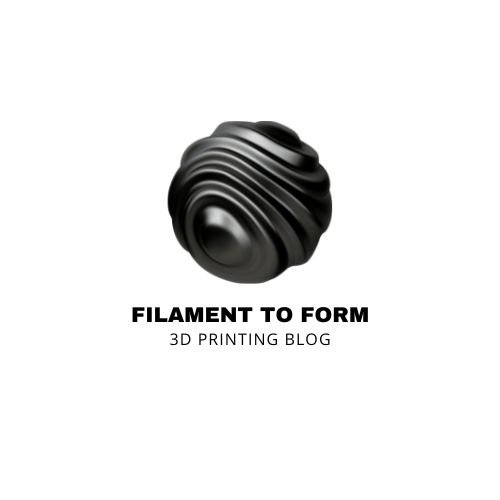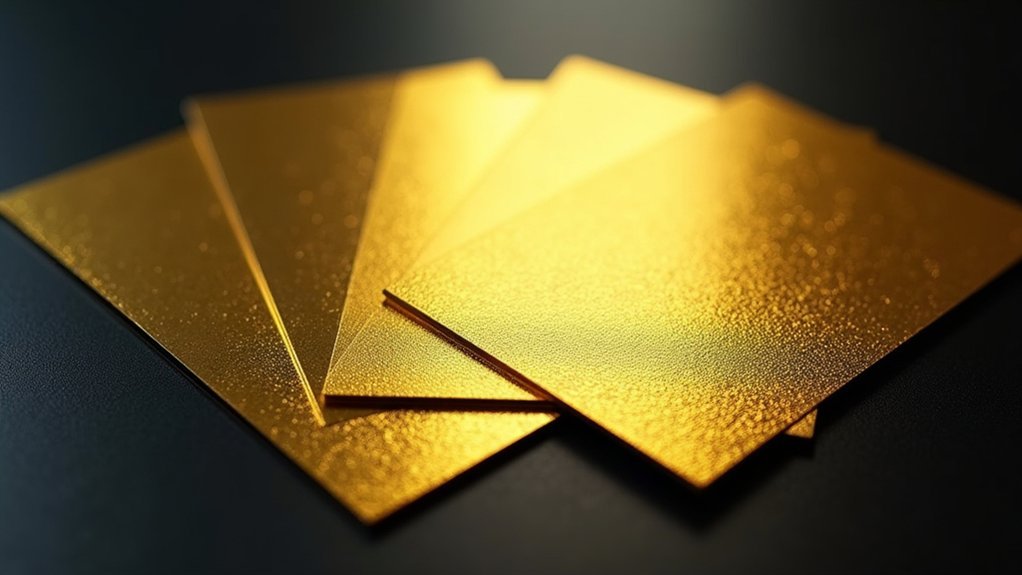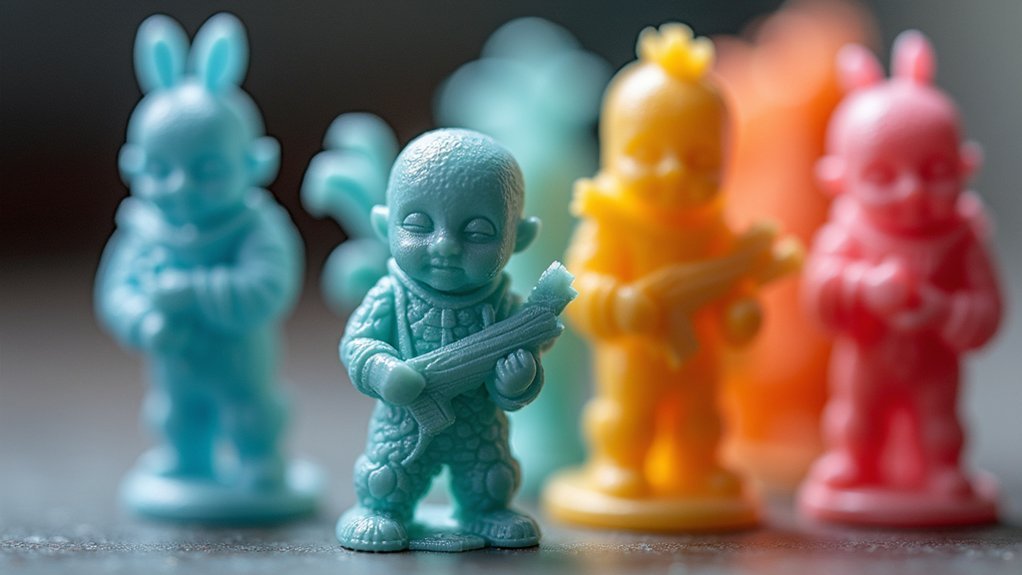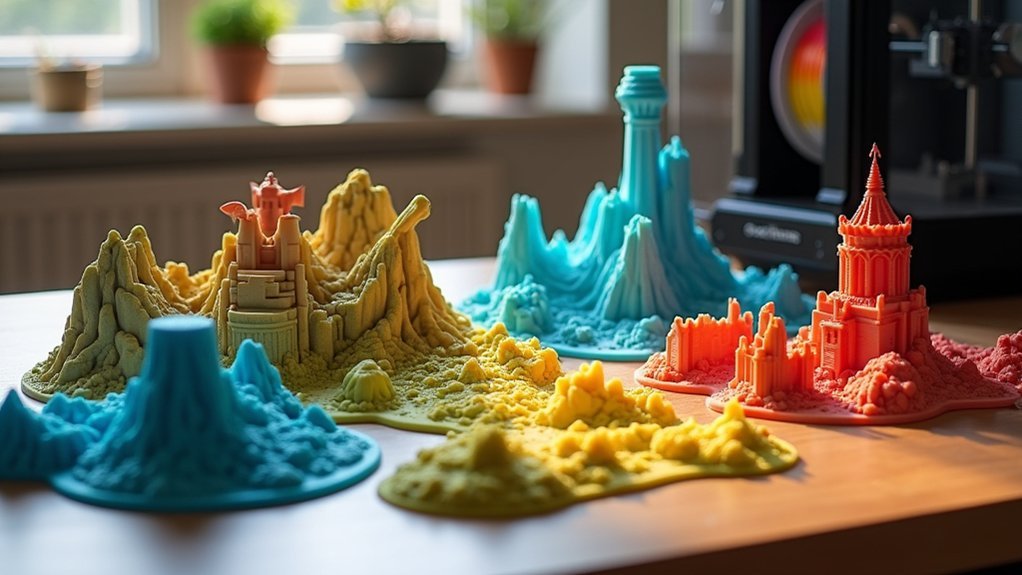You’re struggling with poor bed adhesion and failed prints because your current build surface isn’t cutting it for professional work. The right PEI sheet transforms your 3D printing experience, delivering consistent first-layer adhesion, easy print removal, and the surface finish quality that separates amateur projects from professional results. But not all PEI sheets perform equally—some excel with specific filaments while others offer superior durability, and choosing incorrectly will cost you time and materials.
Ender 3 V3 SE Double Sided PEO PEI Sheet for Creality 3D Printers
If you’re running a Creality 3D printer and need a versatile build surface that handles multiple filament types, the Ender 3 V3 SE Double Sided PEO PEI Sheet delivers exceptional value with its dual-surface design. You’ll get a smooth PEO side that’s perfect for PLA and TPU up to 120°C, plus a textured golden PEI side that handles demanding materials like ABS, ASA, PETG, Nylon, PA, and PC through multiple heat cycles. The magnetic base features dual handles and positioning holes for precise installation, while the flexible surface lets you easily remove prints by simply flexing the sheet without compromising flatness or adhesion quality.
Best For: Creality 3D printer users who want a versatile build surface that can handle multiple filament types from PLA to high-temperature materials like Nylon and PC without needing to swap beds.
Pros:
- Dual-surface design offers smooth PEO for easy-release materials and textured PEI for high-temperature filaments up to multiple heat cycles
- Magnetic base with dual handles and positioning holes ensures precise installation and easy removal
- Flexible sheet design allows effortless print removal while maintaining excellent flatness and adhesion quality
Cons:
- PEO side has limited temperature range (120°C max) restricting it primarily to PLA and TPU materials
- At 235x235mm, it’s specifically sized for certain Creality models which may limit compatibility with other printer brands
- Magnetic surface requires a compatible magnetic base plate that may not be included with all printer models
BIQU Double Side Textured PEI Build Plate for Bambu-Lab 3D Printers (257x257mm)
Bambu Lab printer owners seeking professional-grade adhesion will find the BIQU Double Side Textured PEI Build Plate delivers exceptional performance across multiple filament types. This 257x257mm flexible spring steel plate works perfectly with P1P/P1S/X1C/X1E/A1 printers, handling nozzle temperatures below 300°C.
You’ll appreciate the excellent adhesion without warping issues, while prints release easily by bending the plate. The double-sided textured PEI coating excels with PLA and PETG, requiring bed temperatures of 45-55°C for PLA and 60-75°C for PETG.
The enlarged heat-isolating handle enables quick removal and cooling. Users consistently report high satisfaction, noting you won’t need glue and cleaning remains minimal with soap, water, or alcohol.
Best For: Bambu Lab 3D printer owners who want professional-grade adhesion with easy print removal across multiple filament types without needing glue or frequent maintenance.
Pros:
- Excellent adhesion without warping and easy print removal by simply bending the flexible plate
- Double-sided textured PEI coating works with various filaments up to 300°C with minimal cleaning required
- High-quality construction with strong temperature stability and enlarged heat-isolating handle for safe removal
Cons:
- Higher price point compared to standard build plates
- Limited to filaments with nozzle temperatures below 300°C
- Requires calibration adjustments based on specific filament and printer settings
Double-Sided Textured PEI Sheet 3D Printer Bed for Creality Ender 3
The Double-Sided Textured PEI Sheet stands out with its robust construction featuring 75% thicker PEI material and 25% thicker spring steel, making it the ideal choice for makers who demand reliable performance during extended printing sessions. You’ll find this 235mm x 235mm sheet compatible with virtually every Ender 3 variant, from the V3 SE to the S1 Pro, plus Ender 5 models.
You can print confidently with PLA, PETG, ABS, and PEEK filaments without additional adhesives. The magnetic base withstands temperatures up to 120°C while providing excellent adhesion. Once your prints cool, simply flex the surface to release models effortlessly. Installation’s straightforward—just stick the magnetic base onto your build plate and position the PEI surface on top.
Best For: Creators who need a durable, versatile printing surface for extended 3D printing sessions with multiple filament types on Creality Ender 3 and Ender 5 printers.
Pros:
- Superior durability with 75% thicker PEI and 25% thicker spring steel construction designed for 24/7 printing
- Excellent compatibility across all Ender 3 variants and Ender 5 models with support for PLA, PETG, ABS, and PEEK filaments
- Easy print removal through flexible magnetic surface that eliminates need for additional adhesives
Cons:
- Limited to 235mm x 235mm size which may not accommodate larger print projects
- Temperature limit of 120°C may restrict use with certain high-temperature filaments
- Requires magnetic base installation which adds extra steps compared to direct glass bed replacements
235×235 Double Sided Textured PEI Magnetic Bottom Sheet for Ender-3 3D Printers
HICTOP’s 235x235mm double-sided textured PEI magnetic sheet transforms your Ender-3 series printer into a versatile printing powerhouse that handles multiple filament types without adhesion headaches. You’ll get excellent print adhesion at 60℃ for standard filaments and 80-85℃ for PETG without needing glue or tools. The flexible steel platform removes easily once cooled, and you can gently flex it if prints stick. Compatible with Ender-3 Pro, V2, Ender-5 series, and CR-20 models, this magnetic system lets you print on both textured surfaces. The maximum bed temperature reaches 130℃, giving you flexibility for various materials while preventing warping and curling issues.
Best For: 3D printing enthusiasts with Ender-3 series printers who want hassle-free printing with multiple filament types without using glue or adhesion aids.
Pros:
- Double-sided textured PEI surface provides excellent adhesion at optimal temperatures while allowing easy print removal when cooled
- Magnetic system enables quick bed surface changes and flexible steel platform can be bent to assist with stubborn print removal
- Compatible with multiple Creality printer models and supports high bed temperatures up to 130℃ for various filament types
Cons:
- Limited to 235x235mm size which restricts compatibility to specific Creality printer models only
- Requires precise temperature control (60℃ for standard filaments, 80-85℃ for PETG) for optimal performance
- Magnetic adhesive installation is permanent and replacement may require removing the original adhesive layer
Double Sided Textured PEI Sheet for 3D Printers (220x220mm)
Owners of popular mid-range 3D printers like the Lulzbot Taz series, Tevo Tornado, and Prusa i3 variants will find exceptional value in this double-sided textured PEI sheet. You’ll appreciate the 220x220mm size that fits multiple printer models perfectly. The PEI powder-coated hardened steel construction withstands temperatures up to 200℃ without warping, making it compatible with PLA, ABS, PETG, and TPU filaments. You can use both sides for extended life, and prints remove easily by flexing the spring steel. The textured surface delivers professional matte finishes while ensuring strong adhesion until temperatures drop below 50℃.
Best For: Owners of mid-range 3D printers like Lulzbot Taz series, Tevo Tornado, and Prusa i3 variants who want a durable, dual-sided printing surface that provides professional matte finishes and easy print removal.
Pros:
- Double-sided PEI coating extends usable life and provides excellent adhesion for multiple filament types (PLA, ABS, PETG, TPU)
- High temperature resistance up to 200℃ with hardened steel construction that won’t warp or deform
- Easy print removal by simply flexing the spring steel sheet, eliminating need for tools or excessive force
Cons:
- Some users reported sizing compatibility issues with specific printer models despite advertised compatibility
- Requires separate magnetic base or clips for mounting as replacement sheet is sold without magnetic base
- Textured surface may not appeal to users who prefer smooth PEI finishes, and some units have minor surface imperfections
Factors to Consider When Choosing PEI Sheets for Professional Print Quality
When you’re selecting a PEI sheet for professional-grade printing, you’ll need to evaluate several critical performance factors that directly impact your print outcomes. The material composition quality determines the sheet’s overall reliability, while temperature resistance range affects compatibility with various filament types. You’ll also want to assess surface texture options, adhesion strength performance, and durability under stress to guarantee consistent results across demanding print jobs.
Material Composition Quality
Several key material factors determine whether a PEI sheet will deliver professional-grade print quality for your 3D printing projects. You’ll want to prioritize sheets with thicker PEI coatings—those that are 75% thicker than standard options offer superior wear resistance and longevity. Look for high-quality sheets that combine flexible spring steel backing with substantial PEI coating thickness, as this construction guarantees both durability and reliable adhesion throughout extended printing sessions.
Temperature resistance is equally critical for your material selection. Choose sheets capable of withstanding temperatures up to 200°C, allowing you to work with various filament types without risking deformation. Double-sided coating options provide additional value, giving you both smooth and textured surfaces to match specific project requirements and maximize your printing versatility.
Temperature Resistance Range
Understanding temperature resistance capabilities helps you select PEI sheets that’ll maintain peak performance across diverse printing applications. Most standard PEI sheets withstand temperatures up to 120°C, making them compatible with popular filaments like PLA, TPU, ABS, and PETG. However, you’ll find higher-end options that resist temperatures up to 200°C, perfect for advanced materials and extended printing cycles without deformation.
This thermal stability guarantees consistent print quality while minimizing warping throughout the process. High-performance PEI sheets feature enhanced thermal stability that maintains adhesion and print integrity through multiple heat cycles. You should match your PEI sheet’s temperature range with your filament requirements—typically 60°C for general materials up to 130°C for specialized filaments—to achieve ideal adhesion and printing success.
Surface Texture Options
Surface texture plays an essential role in determining your print’s adhesion strength and final appearance. You’ll find textured PEI surfaces provide superior grip compared to smooth finishes, making them particularly effective for preventing warping and curling in materials like ABS and PETG. These textured surfaces also deliver better aesthetic quality, creating a matte finish that’s often more visually appealing than glossy alternatives.
Consider investing in double-sided PEI sheets that offer both smooth and textured surfaces. This versatility lets you switch between options based on your specific filament requirements. The surface texture you choose will also influence print removal ease, with flexible textured surfaces typically allowing for smoother detachment once your prints cool to room temperature.
Adhesion Strength Performance
When evaluating PEI sheets for professional applications, adhesion strength performance stands as the most critical factor determining print success rates. You’ll find that PEI’s textured surface creates a matte finish that secures models effectively during printing, preventing warping and detachment failures.
The material’s high-temperature tolerance reaches up to 130°C, ensuring consistent adhesion across various filament types. You should set bed temperatures between 60°C for general materials and 80-85°C for specialty filaments like PETG to achieve ideal bonding.
What sets quality PEI sheets apart is their flexibility for easy print removal—simply bend the cooled sheet to detach models without damage. Professional-grade sheets maintain their adhesion properties through extended use, eliminating the need for additional adhesives while delivering reliable performance.
Durability Under Stress
Professional 3D printing environments demand PEI sheets that can withstand repeated thermal cycling without compromising performance. You’ll find that thicker PEI layers, particularly those 75% thicker than standard designs, greatly enhance durability and resist deformation during prolonged use. This increased thickness prevents wear patterns that typically develop from constant heating and cooling cycles.
Double-sided PEI sheets extend your material’s lifespan by providing two usable surfaces. When one side shows wear, you can simply flip to the fresh side, maximizing your investment. The flexibility inherent in quality PEI construction allows for easy print removal without surface stress or damage.
High flatness standards guarantee your sheets maintain their shape integrity under thermal stress. You’ll experience consistent performance even after hundreds of print cycles, preventing the warping issues that plague inferior materials.
Compatible Filament Types
Material compatibility becomes equally important as durability when selecting PEI sheets for professional applications. You’ll find PEI sheets work with diverse filament types, including PLA, ABS, PETG, TPU, and Nylon, giving you flexibility across projects. Their high-temperature resistance handles advanced materials requiring nozzle temperatures up to 300ºC effectively.
You should choose smooth PEI surfaces for PLA and TPU printing, while textured varieties enhance adhesion for PETG and Nylon, preventing warping issues. Different PEI sheets offer specific temperature guidelines—PETG performs best with bed temperatures between 60-85ºC. This temperature versatility guarantees you’ll achieve reliable results whether you’re printing standard filaments or high-performance materials, making PEI sheets adaptable to various professional printing requirements.
Installation Ease Requirements
Since professional 3D printing demands consistent workflows, you’ll want PEI sheets that install quickly without compromising precision. Look for sheets with magnetic bases or easy-to-adhere backing that eliminate complicated setups while ensuring secure heated bed attachment.
Choose options featuring clear installation instructions, particularly those using simple magnetic bottom sheet systems where you stick the base to your heated bed before placing the PEI surface on top. This streamlined process saves valuable time during printer maintenance.
Consider sheets with dual handles or positioning holes that facilitate precise placement and alignment during installation. Flexible PEI sheets offer additional advantages, allowing easy removal and adjustment without requiring extra tools. Most importantly, verify compatibility with your specific build plate type to prevent installation difficulties and maximize adhesion performance across various printing projects.
Frequently Asked Questions
How Often Should I Replace My PEI Sheet for Optimal Performance?
You should replace your PEI sheet every 200-300 print cycles or when you notice decreased adhesion, visible wear, or scratches that affect print quality and bed leveling consistency.
Can PEI Sheets Be Cleaned With Isopropyl Alcohol Safely?
You can safely clean PEI sheets with isopropyl alcohol. Use 70-99% concentration and wipe gently with a microfiber cloth. It’ll remove oils and residue without damaging the surface or affecting adhesion properties.
What Temperature Range Works Best With PEI Sheets?
You’ll get ideal results with PEI sheets between 60-80°C for the heated bed. Start at 60°C for PLA, use 70°C for PETG, and go up to 80°C for ABS materials.
Do PEI Sheets Work With All Filament Types?
You’ll find PEI sheets work with most filament types including PLA, PETG, ABS, and TPU. However, they’re not ideal for flexible filaments like TPE, which can bond too strongly and damage the sheet.
How Do I Fix Scratches or Damage on My PEI Sheet?
You can sand light scratches with fine-grit sandpaper, then clean thoroughly. For deeper damage, flip the sheet if double-sided, or replace it entirely. Avoid using sharp tools that’ll cause more scratches.





Leave a Reply